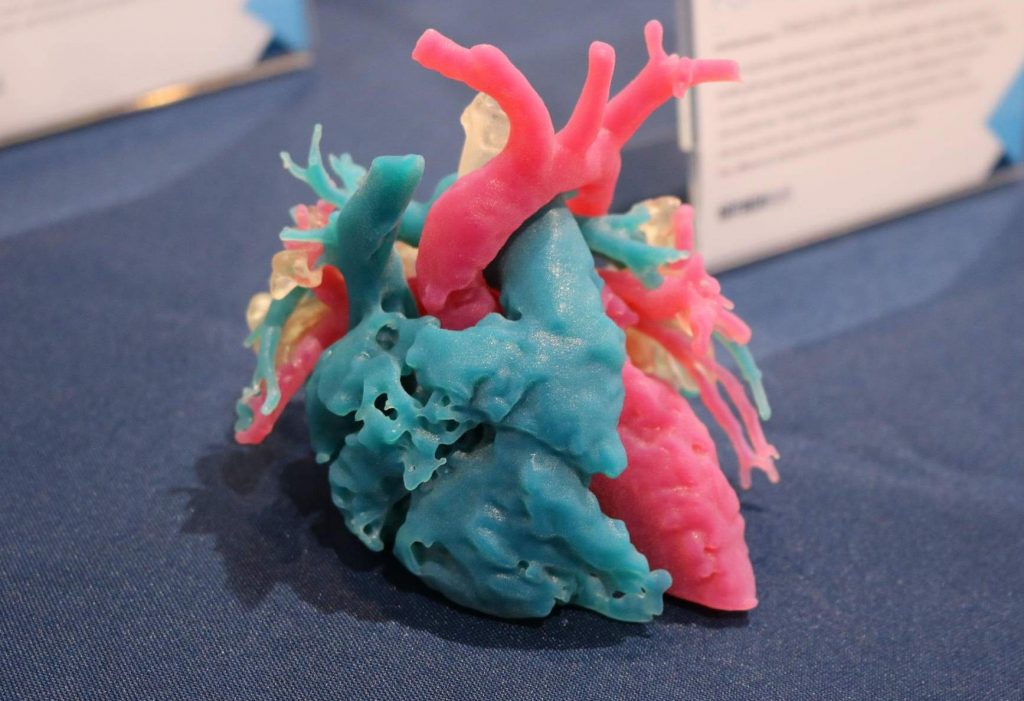The Children’s Heart Research and Outcomes Center, aptly abbreviated as HeRO, is at the cutting edge of tissue engineering. A part of Georgia Tech and Emory University, HeRO is developing therapies that can change children’s lives and, unsurprisingly, 3D printing is playing its role in that plan.
The Davis Group, led by HeRO director Michael Davis, is working with 3D bioprinters to engineer valves, leaflets and patches for the heart, made from a patient’s own stem cells.With these projects, the hope is that one day HeRO will be able to provide a long-lasting solution for children born with congenital heart disease.

According to the Davis Group’s bio, “Currently, the only major treatment for heart failure is transplantation. However, it is estimated that less than 30% of patients survive to receive their new hearts.”
For this reason, the lab pulls focus on to regenerative fields of treatment and preservation “using molecular-based and biomaterials-based approaches to restoring function after cardiac injury.”
In one project, led by fourth-year PhD candidate Aline Nachlas, the lab is looking at a 3D bioprinting approach to produce heart valves.
So far, Nachlas has succeeded in finding the perfect material for encapsulating to-be-printed stem cells. By-passing the use of animal cells, the team is hopeful that this approach will be able to create valves that grow with the patient, rather than needing multiple adjustment operations.
“We hope these cells will be able to print valves, or at least the leaflets that make up valves,” said Davis.
“We want to create a living valve that grows with the child.”
Patching up the heart
In another project at the Davis lab, researchers are attempting to 3D print cell-laden heart patches.
Dr. Vahid Serpooshan, a new recruit for the lab, has proven experience in this field and is working with other HeRO researchers to investigate the technology. At present, the method uses cells derived from pigs to 3D print a “living” gelatinous cell scaffold.
“Very few people are trying to heal with 3D printed patches,” said Davis. “My lab is on the forefront of that research. We are trying to make a positive contribution in a sensible way.”
3D bioprinting of cardiac patches
Courtesy of new hire Dr. Vahid Serpooshan and his former mentor Dr. Sean Wu, we see a 3D printed biopatch being made incorporating stem cells. Dr. Serpooshan and several of the other HeRO investigators are working hard on stem cell and 3D bioprinting technologies to bring the next generation of therapies to children with heart disease. Children's Healthcare of Atlanta; KidsatHeart Choa; Sibley Heart Center Cardiology; Wallace H. Coulter Department of Biomedical Engineering; The Children's Heart Foundation; Emory University School of Medicine
Posted by Children's Heart Research and Outcomes Center on Tuesday, April 24, 2018
Better help for children
Presenting so many delicate cases, children are often the main beneficiaries of technological advances in medicine.
At Phoenix Children’s Hospital, Arizona, clinicians are using 3D printers to help plan vital procedures on infants hearts.
Artificial limbs also have an insurgence of contributors using 3D printing to make more affordable, and adjustable devices for kids.
“With pediatrics,” explains Davis, “clinicians are very open to collaborating and trying new procedures and therapies,”
“In the pediatric world, there are fewer options for these kids, and the parents and clinicians are hungry for new therapies to try.”
For medical updates and more subscribe to the 3D Printing Industry newsletter, follow us on Twitter and like us on Facebook.
Sign up to 3D Printing Jobs here and kickstart a new career.
Featured image shows Michael Davis director of the Children’s Heart Research and Outcomes Center (HeRO). Photo via Georgia Tech



